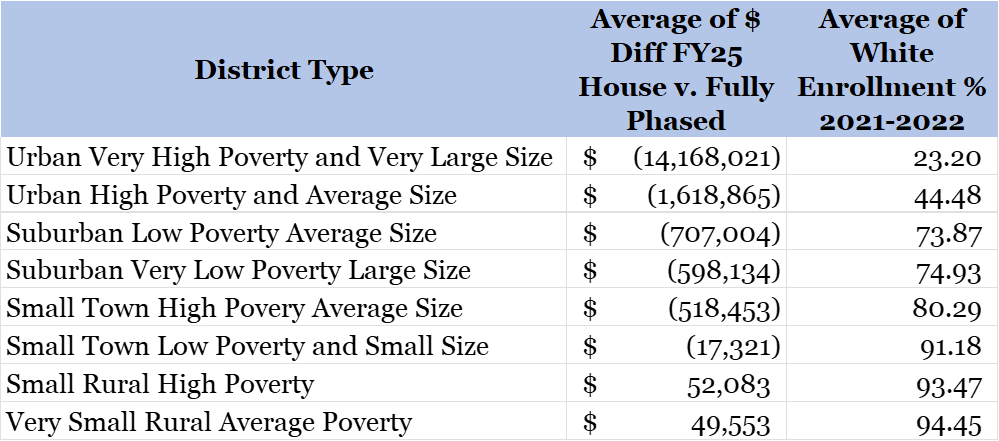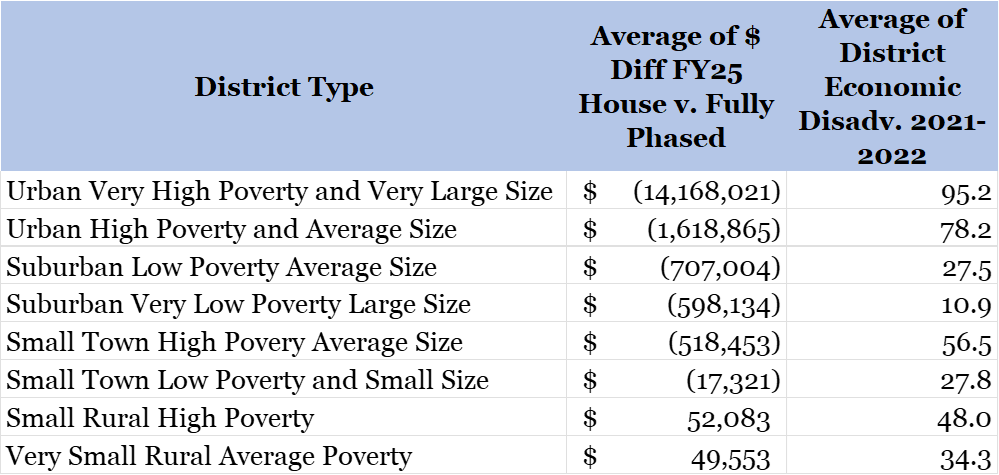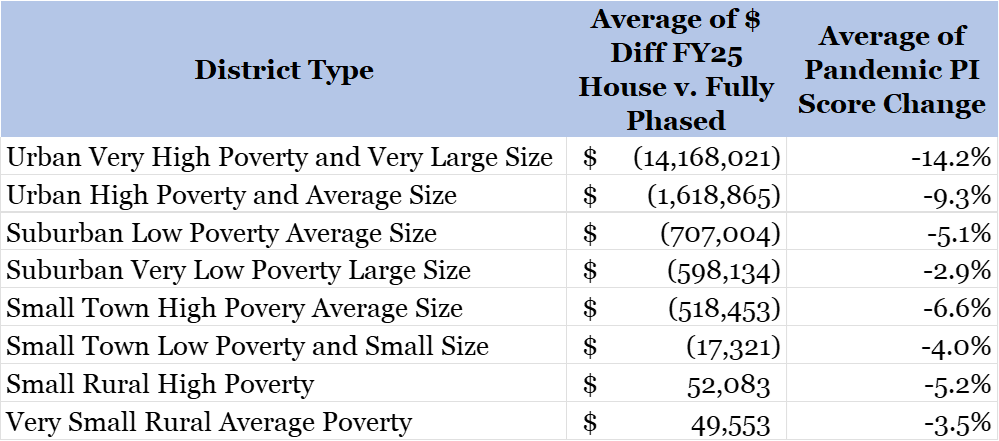10th Period: House Budget is a Good Step
File this House Budget under “So Close, Yet So Far.”
I don’t mean for this to be an outright takedown of the House Budget that just passed last week. It does, for the most part, keep the march toward fully funding the Fair School Funding Plan on track — quite an achievement.
However, while the plan puts the school funding system only about $310 million short of the fully funded plan as promised in the last biennial budget, there is a major issue: Kids in the districts that most need the additional revenue will be the last to feel the plan’s full effect (if they ever feel it).
I’ll show you what this looks like in a chart below:
As you can see, the fewer White students in the district, the more distant the House Budget is from what a fully funded Fair School Funding Plan would provide your students. But it’s not just a racial disparity. It’s also economic. Look at how your rate of economically disadvantaged kids affects your proximity to full funding:
Not quite as clear a line as race, but still pretty clear trend: The poorer your district, the farther the state needs to go to live up the Fair School Funding Plan’s promise.
Likewise, districts whose students have struggled the most to recover from the pandemic are also being shortchanged the most from the House budget to a fully funded Fair School Funding Plan:
Again, not as clear a relationship as race, but still pretty clear that the more you have to catch up from pre-pandemic learning, the farther you are away from the fully funded plan (PI score is Performance Index Score — an amalgamation of all test scores taken in a school district).
It is impressive that this legislature has essentially met or exceeded the Fair School Funding Plan’s initial promise from two years ago in about 2 out of every 5 districts. That’s an accomplishment to celebrate.
However, what the data shows is that until the plan is fully funded for every kid, it does not meet the constitutional requirement of a thorough and effective school funding system. And right now, more than 60% of the plan’s funding shortfall is happening in districts where more than 3 in 5 students are non-white, more than 3 in 4 are economically disadvantaged and who are, on average, 10 percent or more behind on test scores from pre-pandemic levels.
When a typical student in Columbus (with nearly 80 percent non-white students, more than 60 percent of whom are economically disadvantaged) is nearly $1,800 under a fully funded model while a typical student in Marion (whose students are more than 97 percent White and only 4.5 percent economically disadvantaged) are $637 per pupil over what the Fair School Funding Plan promised, the state is not letting the plan work.
Yet.
The question now is whether the Ohio Senate will keep this House plan in place, improve on it, or (more likely) make this worse.
And will the next legislature finally fulfill the Fair School Funding Plan’s promise to Ohio’s 1.7 million students? Or will they keep perpetuating the system’s inequities that have plagued at least 3 generations of Ohio students.
I should also mention that the districts that are furthest from full funding also lose far more funding and students to charter and voucher programs. So, once again, committing more than $2 billion in state foundation aid to privately run charter schools and private school tuition subsidies for parents means the kids remaining in those public schools are continuing to get shortchanged.
This disparity is even more telling now that kids in districts that don’t lose nearly as much to those privately run schools are either at or exceeding their fully funded amounts.
But that’s another post. For another day.
This blog post has been shared by permission from the author.
Readers wishing to comment on the content are encouraged to do so via the link to the original post.
Find the original post here:
The views expressed by the blogger are not necessarily those of NEPC.



